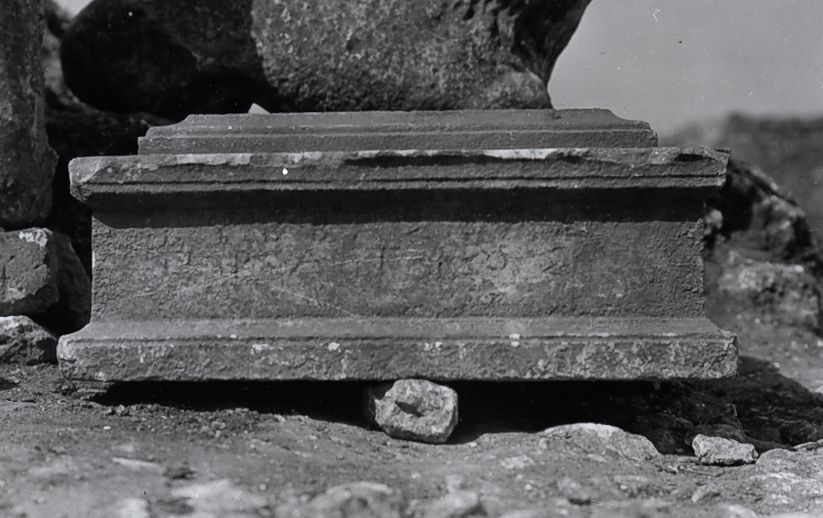EpiDoc XML:
IGCyr0254002
Trismegistos ID:
105918
Source description
Support: Marble base, heavily corroded, with double plain mouldings (w: 0.73 × h: 0.23 × d: 0.58).
Layout: Inscribed on main face.
Letters: 0.025, no serifs; slanting sigma, smaller omicron.
Date: End of fourth or beginning of third centuries BC (lettering, prosopography).
Findspot: Bought by H.F. De Cou on April 7th, 1911 from an Arab at Cyrene ➚ (see commentary).
Last recorded location: Seen by G. Oliverio before 1932 at Shahat. Never found since.
Text constituted from: Transcription from previous editors.
Bibliography
Robinson 1913, p. 178, n. 48 (without illustration), whence Sammelbuch 5896; Oliverio 1933-1936, p. 114, n. 98, fig. 54, whence SEG, 9.210; IGCyr 025400 ➚. Cf. Thorn – Thorn 2009, p. 137; Belzic 2022, catalogue B.73.
Text
French translation
Kyrbasias fils de Pratis.
English translation
Kyrbasias son of Pratis.
Italian translation
Kyrbasias figlio di Pratis.
Commentary
Oliverio's provenance 'Necropolis' is only conjectural, as shown by De Cou's indication in Robinson 1913. Consequently, a family link with Pratis in IGCyr0253002 is quite uncertain as both bases might come from different places and not from a common family tomb. Without further arguments, the Thorns suspected that the provenance was the North Necropolis.
On the other hand a P[rati]s son of Kyrbasias is mentioned in 320 BC in the diagramma of Ptolemy (IGCyr0108002, l. 79) as being nomophylax. The fact that the name Kyrbasias is very rare allows to consider that both mentions refer to one and the same person, rather than to grandfather and grandson.
CC BY-NC-SA 4.0 Deed Attribution-NonCommercial-ShareAlike 4.0 International License.
All citation, reuse or distribution of this work must contain a link back to DOI: https://doi.org/10.60760/unibo/igcyrgvcyr2 and the filename (IGCyr000000 or GVCyr000), as well as the year of consultation.

